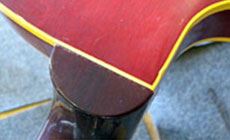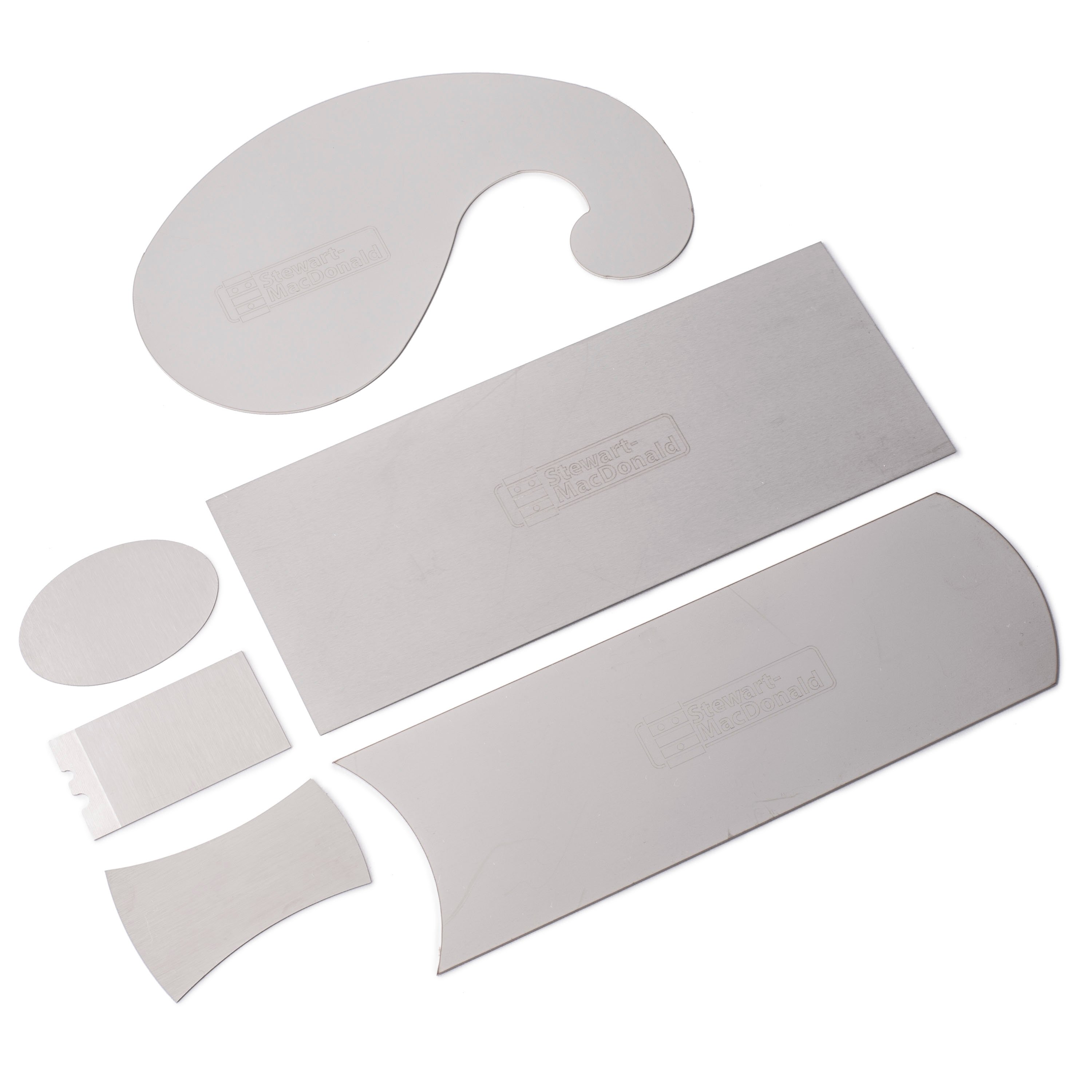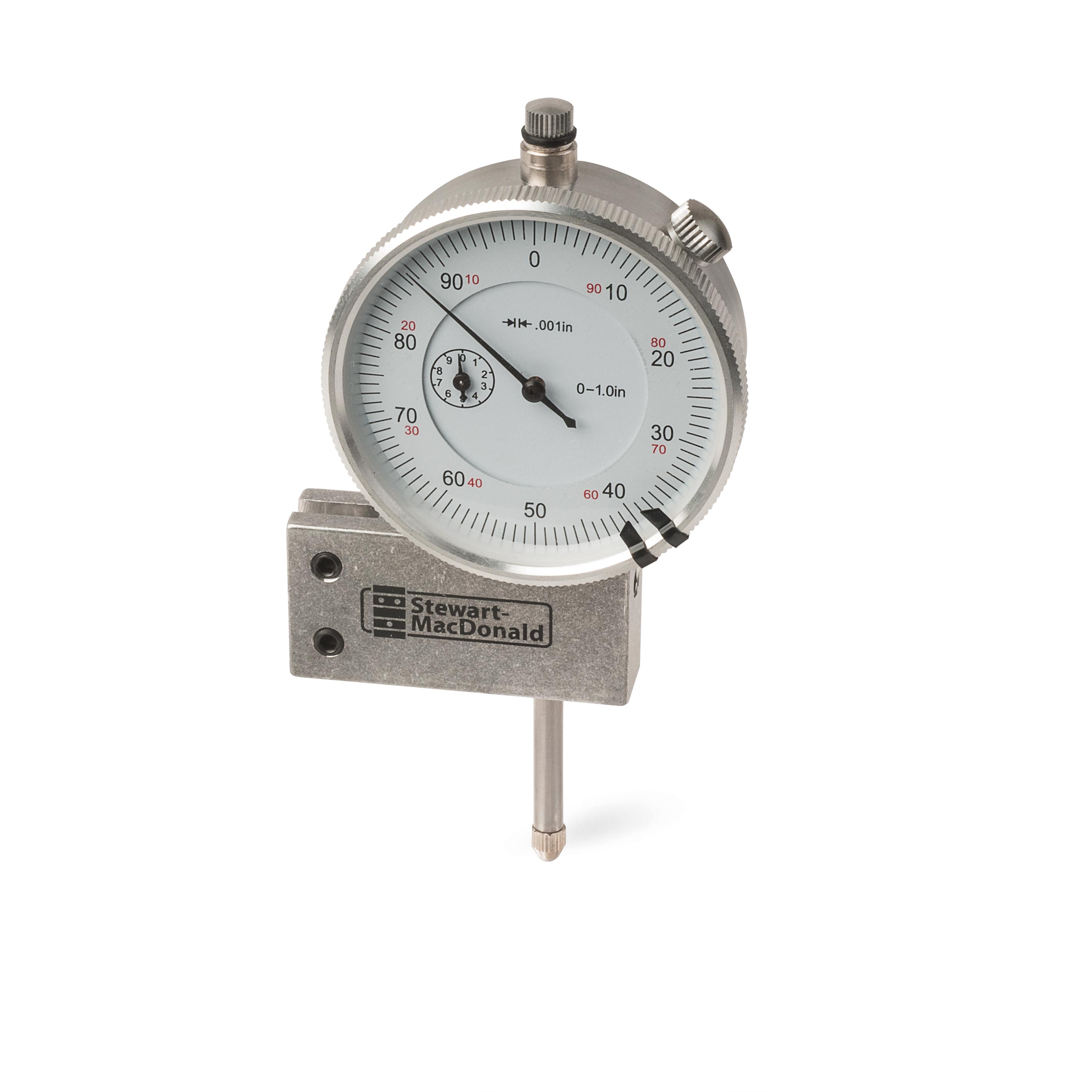The damage caused by storing a guitar in a hot car or attic
You wouldn’t wish this on a dog, right? Let me show you what can happen... This beauty of a Gibson ES-125 just came into my shop. For years, it’s been kept super-clean by my customer’s family. But it’s also been kept in a hot attic. In repair work, we use heat to loosen glue joints on purpose. It can happen accidentally, too: years of string tension combined with way-hot storage has gradually pulled this neck joint apart. It’s more common to see this on acoustic guitar bridges, but every now and then you come across something nastier, like this. I put one of our surface thermometers on the dash of a car in the sun, and it registered 175° F. Then I tested various glues for joint failure, applying heat for about four hours. You can see here that a hot car is more than enough to soften glue. The moral: store guitars in the same temperatures you prefer for yourself. Don’t get the idea that this neck joint was loose; it was solid. After pulling forward when it was hot, it had set back up when it cooled down and then stayed in this position. I needed to remove the neck by steaming the joint, cleaning it up and reattaching it using hot hide glue. This meant removing a fret above the neck joint, drilling a hole in the fret slot, and injecting steam into the joint to soften the glue. I removed the the first fret past the neck/body seam, using care so I could reinstall it. The original frets are in great shape so the last thing I want to do is refret this. I heated the fret with a soldering iron and pulled it slowly and carefully, without marring it or misshaping it in any way. It came out cleanly, without creating any chips around the slot. I drilled down into the joint to accommodate the steamer needle. As I started pumping steam into the neck joint, I became nervous: I didn't want all that moisture saturating the plywood top and back. My shopmate Gene passed along this tip from Jon Eaton of Woodsong's Lutherie: turn the instrument over and pump the steam up into the hole instead. This way, the condensation runs out onto the floor rather than pooling inside the guitar. This is a good one, folks! The joint came loose, nice and clean. While the hide glue was still wet, most of it cleaned away easily with a damp rag and a small scraper. The steam left everything moist, so I let the guitar sit for a day or two to dry out. Later I scraped away the remaining dried glue, being careful not to scrape away wood from the surfaces of this dovetail joint. I didn’t want to change the shape in any way. Test-fitting the neck showed that my caution had paid off: the neck-set angle was still correct. With rosewood dust and super glue, I patched the holes I’d drilled into the fret slot. A teflon fret dam keeps the slot clear while I patch along its edges. I then reinstalled the fret, seating very carefully at the same height as it was before. I applied a generous amount of hot hide glue before clamping it up. You have to move quickly when using hot glue, to get the joint together before the glue has a chance to skin over—otherwise you risk a potential glue fail. When gluing, I use a space heater to heat my work area, and lamps to heat the work. I used cam clamps and bar clamps to reattach the neck, with a rubber binding band adding back pressure to pull the heel tightly into the joint. When I removed the clamps, the neck fit nicely! It’s ready to go in the neck jig for a level and dress and a good setup. This beauty will be heading home in tip-top playing shape!Don’t leave me in a hot car!

A problem you may not have thought of.

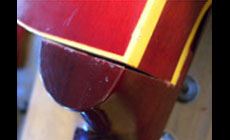

Let's get scientific.

The repair:
Step 1

Step 2
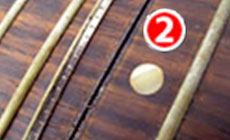
Step 3

Step 4

Step 5
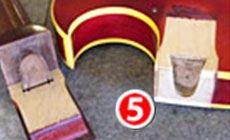
Step 6

Step 7
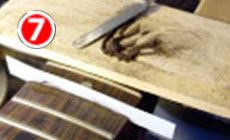
Step 8

Step 9

Back in business!
